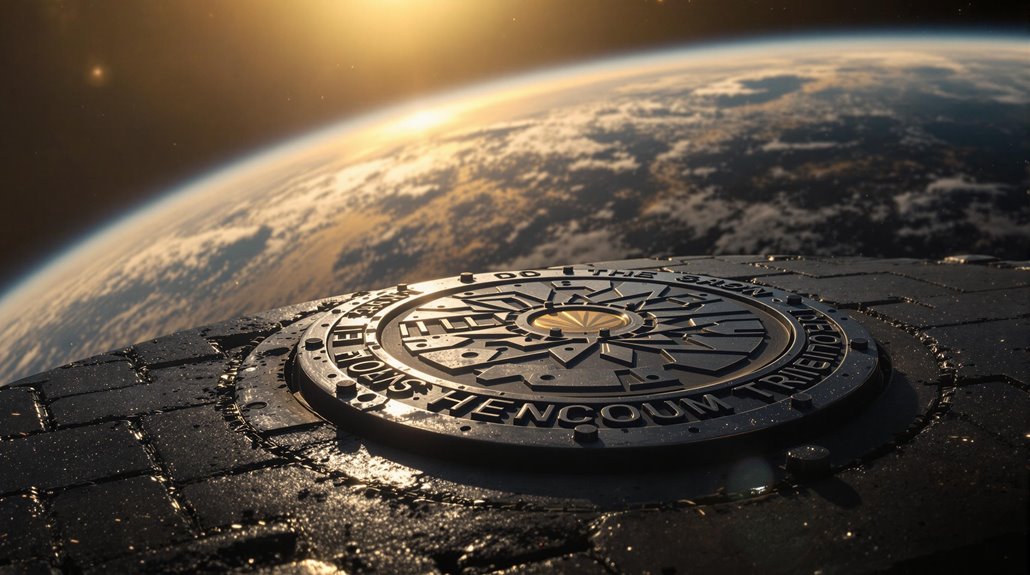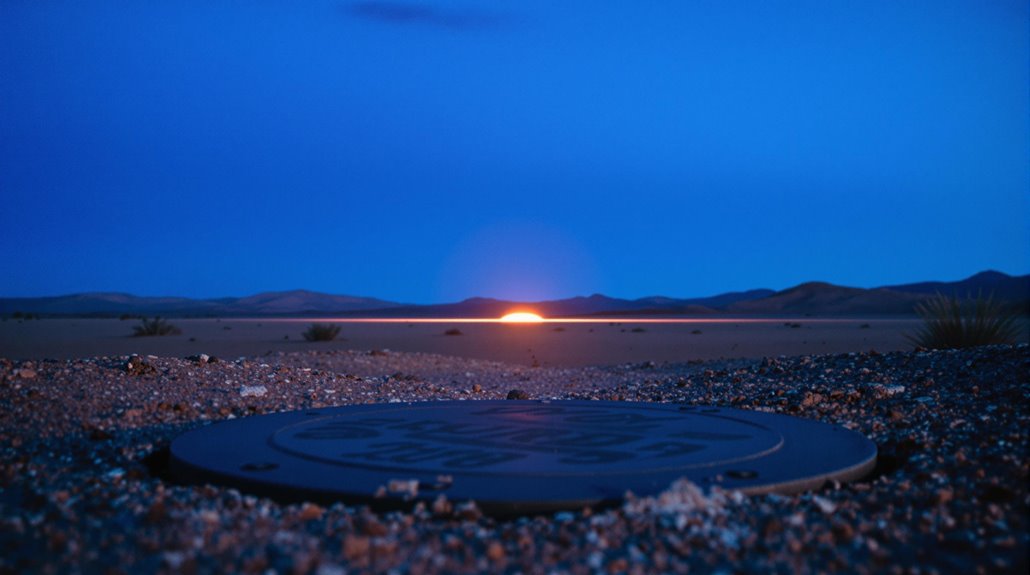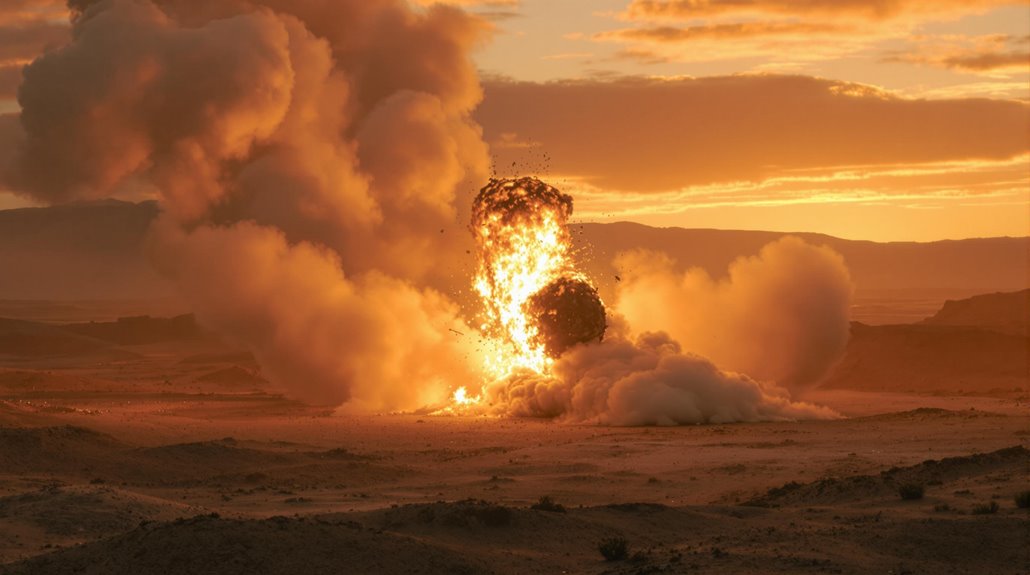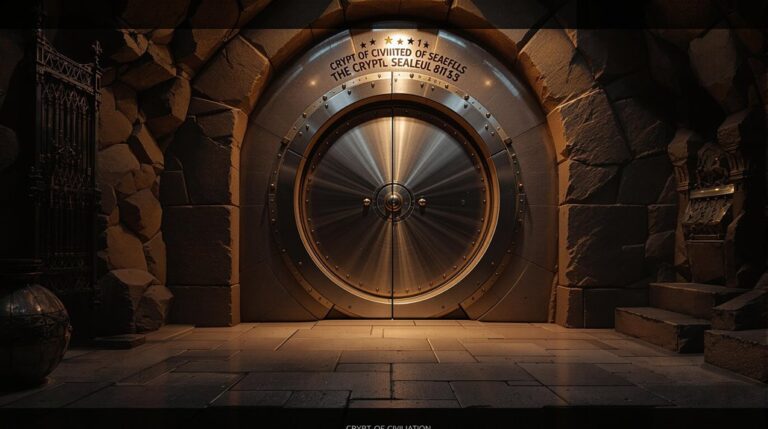Did We Accidentally Launch a Manhole Cover Into Orbit?
During the 1950s, only 4% of all human attempts to reach space were successful, yet one of our most remarkable space launches may have happened completely by accident. You've probably heard about rockets, satellites, and space shuttles, but a simple steel cap from a nuclear test shaft might have become Earth's first human-made object to reach extreme speeds of 125,000 mph. It's a story that challenges what is understood about physics, space travel, and the sometimes surprising consequences of Cold War experiments.
The Cold War's Accidental Space Race

While most people know about the intentional Space Race between the U.S. and Soviet Union, the Cold War also spawned several accidental advances in our understanding of space and orbital mechanics.
You can trace much of this progress to nuclear tensions and space paranoia that defined the era. When the Soviets launched Sputnik-1 in 1957, it wasn't just a scientific milestone – it triggered an unprecedented acceleration in U.S. space and weapons development. The incident revealed major gaps in detection capabilities when 607 scientific rockets were launched from Norway's Andoya range between 1962-1994.
But not all advances came from planned missions. The 1983 Soviet nuclear false alarm incident and the 1995 Norwegian rocket scare forced both superpowers to improve their satellite detection systems and orbital tracking capabilities. Lieutenant Colonel Stanislav Petrov's actions in correctly identifying the 1983 warning as a computer error helped prevent a catastrophic nuclear response.
These close calls, driven by misidentified objects in space, led to enhanced monitoring technologies that we still use today for tracking everything from satellites to space debris.
Operation Plumbbob: A Nuclear Testing Ground
Before America's space ambitions took shape, Operation Plumbbob emerged as one of the most extensive nuclear test series ever conducted on U.S. soil. From May to October 1957, scientists and military personnel executed 29 nuclear detonations at the Nevada Test Site, pushing the boundaries of nuclear safety and testing methods. Growing concerns about radiation exposure led to underground testing protocols being developed during this period.
You'll find the series introduced several test innovations that changed how we approached nuclear experimentation. Engineers deployed devices on higher towers and balloons to minimize fallout, while also pioneering the first fully contained underground nuclear test. Among the most notable experiments was the Pascal-B test, where a welded iron lid mysteriously vanished after detonation.
The operation wasn't just about weapons – it brought together 18,000 Department of Defense personnel for tactical training and equipment testing. Through Operation Plumbbob, you can see how America balanced its growing nuclear capabilities with safety concerns and military readiness.
The Pascal-B Test: An Unexpected Launch
Deep beneath the Nevada desert in 1957, an unconventional space launch may have accidentally occurred during the Pascal-B nuclear test.
When scientists placed a 900 kg steel plate cap over a 500-foot shaft containing a nuclear device, they didn't expect the high speed phenomena that followed. The nuclear implications became clear when the explosion, 50,000 times more powerful than predicted, launched the cap skyward at an estimated 125,000 mph.
You can only see the cap in a single frame of the millisecond-by-millisecond footage before it vanished forever. The test was conducted at Los Alamos Scientific Laboratory as part of Operation Plumbob. The resulting flash created a visual effect similar to a Roman candle shooting into the sky.
Dr. Robert Brownlee's calculations suggest it reached five times Earth's escape velocity, potentially making it the first human-made object in space – months before Sputnik 1.
While some experts question whether the cap survived atmospheric friction, its true fate remains a fascinating scientific mystery.
Breaking Speed Records: The Mathematics Behind the Cover
The mathematics behind the Pascal-B manhole cover's unprecedented speed revealed a stunning reality. Using a high-speed camera shooting 1,000 frames per second, scientists captured the cover's journey in a single frame, allowing them to perform critical speed calculations. Critical thinking skills were essential for scientists to analyze this groundbreaking data, much like modern business communication challenges.
By measuring the distance traveled in that millisecond, Dr. Brownlee determined the cover reached an astounding velocity of 125,000 mph—six times Earth's escape velocity.
The velocity implications were extraordinary. You're looking at an object moving 34 miles per second, outpacing every human-made object in Earth's atmosphere at the time.
This underground nuclear test that launched the cover occurred just months before Sputnik's historic launch. It surpassed Sputnik 1's orbital speed by over 100,000 mph and even exceeded modern spacecraft like the Juno probe. At such extreme speeds, the cover might've been moving too fast to experience significant atmospheric friction, potentially enabling its escape from Earth's atmosphere.
Theories and Debates: Where Did It Go?

Whatever happened to the fastest manhole cover in history remains one of science's most intriguing mysteries.
Scientists have debated its fate for decades, developing competing theories about its final destination.
The most dramatic possibility suggests you're looking at humanity's first object in space, as the cover may have exceeded escape velocity and entered orbit before Sputnik.
However, atmospheric burn-up presents an equally compelling scenario – the cover's flat shape and incredible speed likely generated enough friction to vaporize it completely.
Other speculative trajectories propose the cover survived by morphing into a more aerodynamic shape, similar to an explosively formed penetrator.
Small-scale experiments using water-filled buckets showed that metal plate deformation could enable atmospheric penetration.
If it did make it through the atmosphere, it could be lying undetected as unidentified debris in a remote location, buried underground, or mistaken for a meteor impact site.
Legacy of the Fastest Manmade Object
Despite remaining a footnote in nuclear testing history, Pascal-B's supersonic manhole cover left an indelible mark on scientific understanding and space exploration.
You'll find its influence most significantly in the development of nuclear propulsion concepts, particularly Project Orion, which drew inspiration from the experiment's demonstration of extreme velocities achievable through nuclear force. The manhole cover's incredible trajectory mirrors the high-speed imaging technology used to document its historic launch.
The incident has transformed into one of science's most fascinating urban legends, sparking decades of debate about whether it truly became the first human-made object to reach space – weeks before Sputnik 1.
Beyond the technical achievements, this accidental launch challenged our understanding of material physics at extreme speeds and highlighted the unexpected outcomes of nuclear testing. The estimated speed of 125,000 mph during the experiment remains a testament to the immense power unleashed during Operation Plumbbob.
Today, the story continues to captivate scientists and space enthusiasts, serving as a reminder of humanity's capacity for accidental breakthroughs.











